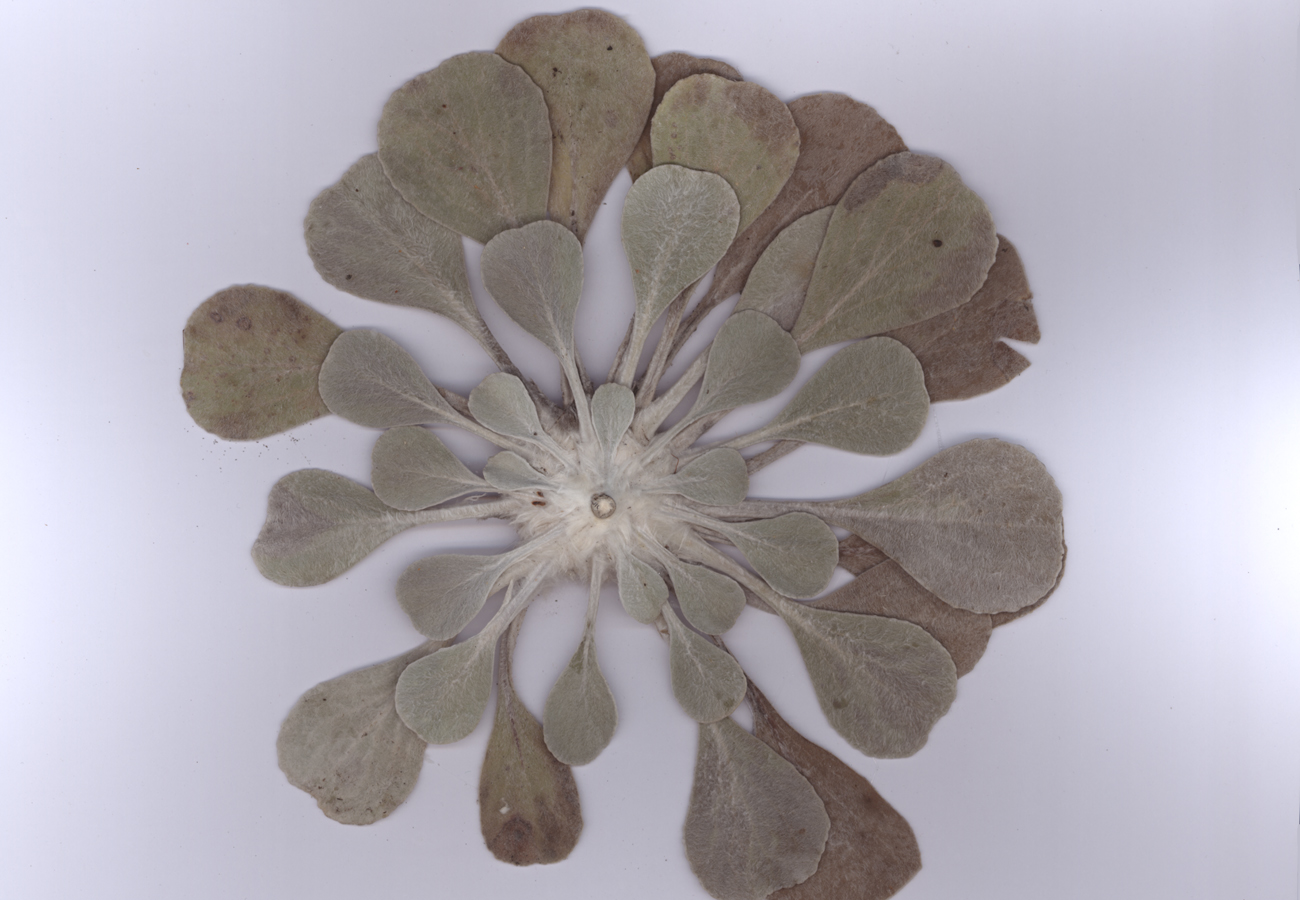Abstract
The heterotypic synonyms Verbascum limnense and Celsia tomentosa are neotypified and lectotypified, respectively, and their nomenclature is clarified. The former binomial represents the correct name at species rank for a range-restricted, paleoendemic plant confined to Central Greece. Furthermore, the new nothospecies Verbascum × sipiadense, representing the hybrid formula V. limnense × V. sinuatum, is described from the island of Evvia (Euboea).
References
Boissier, P.E. (1856) Diagnoses plantarum Orientalium novarum ser. 2, 3. B. Herrmann, Leipzig, 177 pp.
Boissier, P.E. (1879) Flora Orientalis 4(2). H. Georg, Genevae [Genève], Basileae [Basel] & Lugduni [Lyon], pp. 281–1276.
Dimopoulos, P., Raus, Th., Bergmeier, E., Constantinidis, Th., Iatrou, G., Kokkini, S., Strid, A. & Tzanoudakis, D. (2013) Vascular plants of Greece: An annotated checklist. Botanischer Garten und Botanisches Museum Berlin-Dahlem, Berlin; Hellenic Botanical Society, Athens, 372 pp.
Ferguson, I.K. (1971) Notes on the genus Verbascum (Scrophulariaceae). Flora Europaea Notulae Systematicae ad Floram Europaeam spectantes No. 9. Botanical Journal of the Linnean Society 64: 229–233. https://doi.org/10.1111/j.1095-8339.1971.tb02145.x
Ferguson, I.K. (1972) Verbascum L. In: Tutin, T.G., Heywood, V.H., Burges, N.A., Moore, D.M., Valentine, D.H., Walters, S.M. & Webb, D.A. (Eds.) Flora Europaea 3. Cambridge University Press, Cambridge, pp. 205–216.
Fischer, E. (1997) Notulae ad Floram Germanicam II. Typifications of Linnean names of Scrophulariaceae occurring in Germany. Feddes Repertorium 108: 111–117. https://doi.org/10.1002/fedr.19971080110
Fraas, C.N. (1845) Synopsis plantarum florae classicae. E.A. Fleischmann, München, 320 pp.
Hertel, H. & Schreiber, A. (1988) Die Botanische Staatssammlung München 1813–1988 (Eine Übersicht über die Sammlungsbestände). Mitteilungen der Botanischen Staatssammlung München 26: 81–512. Available from: http://indexcoll.botanischestaatssammlung.de/ (accessed 6 April 2021)
Ghahremaninejad, F., Riahi, M., Babaei, M., Attar, F., Beh¸cet, L. & Sonboli, A. (2014) Monophyly of Verbascum (Scrophularieae: Scrophulariaceae): evidence from nuclear and plastid phylogenetic analyses. Australian Journal of Botany 62: 638–646. https://doi.org/10.1071/BT14159
Goerdten, U. (2021) Carl Fraas. In: Wikipedia, Die freie Enzyklopädie. Version: 13 May 2021. Available from: https://de.wikipedia.org/w/index.php?title=Carl_Fraas&oldid=211922493 (accessed 28 May 2021)
Halácsy, E. von (1898) Die bisher bekannten Verbascum-Arten Griechenlands. Verhandlungen der Kaiserlich-Königlichen Zoologisch-Botanischen Gesellschaft in Wien 48: 119–150.
Halácsy, E. von (1902) Conspectus florae Graecae 2. W. Engelmann, Lipsiae [Leipzig], 612 pp.
Hayek, A. von (1929) Prodromus Florae Peninsulae Balcanicae 2(2). Repertorium Specierum Novarum Regni Vegetabilis Beihefte 30: 97–240.
Huber-Morath, A. (1979) Novitiae Florae Anatolicae XIII. Bauhinia 6: 369–374.
Huber-Morath, A. & Rechinger, K.H. (1960) Zur Kenntnis der Gattungen Verbascum und Celsia in Griechenland. Mitteilungen des Thüringischen Botanischen Vereins 2: 42–55.
Kalheber, H. (2006) Bavarian plant collectors in Greece. 1. Franz Xaver Berger, Franz Zuccarini and Carl Nikolaus Fraas. Willdenowia 36: 565–578. https://doi.org/10.3372/wi.36.36153
Kuntze, O. (1891) Revisio generum plantarum 2. A. Felix, Leipzig [etc.], pp. 375–1011.
Lamarck, J.B.P.A.M. (1779) [“1778”] Flore françoise 2. L’Imprimerie Royale, Paris, 684 pp.
Linnaeus, C. (1753) Species Plantarum. Impensis Laurentii Salvii, Holmiae [Stockholm], 1200 pp.
Murbeck, S.S. (1925) Monographie der Gattung Celsia. C.W.K. Gleerup, Lund, 238 pp.
Murbeck, S.S. (1933) Monographie der Gattung Verbascum. H. Ohlsson, Lund, 630 pp.
Murbeck, S.S. (1939) Weitere Studien über die Gattungen Verbascum und Celsia. C.W.K. Gleerup, Lund, 70 pp.
Nyman, C.F. (1881) Conspectus Florae Europaeae. 3. Typis Officinae Bohlinianae, Örebro Sueciae, pp. 493–677.
POWO (2019, continuously updated) Plants of the World Online. The Royal Botanic Gardens, Kew. Available from: http://www.plantsoftheworldonline.org/ (accessed 5 April 2021)
Rechinger, K.H. (1944) [“1943”] Flora Aegaea. Flora der Inseln und Halbinseln des Ägäischen Meeres. Akademie der Wissenschaften in Wien, Mathematisch-Naturwissenschaftliche Klasse, Denkschriften 105 (1): 1–924 + tab. I–XXV.
Rechinger, K.H. (1961) Die Flora von Euboea. I. Teil. Botanische Jahrbücher für Systematik, Pflanzengeschichte und Pflanzengeographie 80: 294–382.
Strid, A. (2016a) Atlas of the Aegean flora, Part 1: Texts and Plates. Englera 33 (1): 1–700.
Strid, A. (2016b) Atlas of the Aegean flora, Part 2: Maps. Englera 33 (2): 1–878.
Trigas, P. (2003) Contribution to the study of the endemism of the flora of the island of Evvia. PhD Thesis, University of Patras, Greece, 341 pp. [in Greek with an English summary].
Turland, N.J. (2019) The Code Decoded—A user’s guide to the International Code of Nomenclature for algae, fungi, and plants, Second edition. Pensoft, Sofia, 196 pp. https://doi.org/10.3897/ab.e38075
Turland, N.J., Wiersema, J.H., Barrie, F.R., Greuter, W., Hawksworth, D.L., Herendeen, P.S., Knapp, S., Kusber, W.-H., Li, D.-Z., Marhold, K., May, T.W., McNeill, J., Monro, A.M., Prado, J., Price, M.J. & Smith, G.F. (Eds.) (2018) International Code of Nomenclature for algae, fungi, and plants (Shenzhen Code) adopted by the Nineteenth International Botanical Congress Shenzhen, China, July 2017. Regnum Vegetabile 159. Koeltz Botanical Books, Glashütten, 254 pp. https://doi.org/10.12705/Code.2018
Zografidis, A. (2017) New floristic records in Greece. Parnassiana Archives 5: 61–66.
Zuccarini, J.G. (1837) Plantarum novarum vel minus cognitarum, quae in horto botanico herbarioque regio Monacensi servantur, fasc. II. Abhandlungen der Mathematisch-Physikalischen Klasse der Königlich Bayerischen Akademie der Wissenschaften 2: 309–380.


